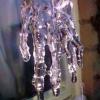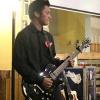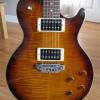Search the Community
Showing results for tags 'tips'.
-
Been thinking about this for a while, how great it would be to offer some tips and tricks on programming HELIX presets to help them sound better and improve tones, and how delightfully wonderful to have things in the same thread to find. While I am not an established veteran of the HELIX "yet", I have discovered a few things that might be useful to others in this rather infinite magic forest of param variability regarding what I consider the best inventive progress in amp modeling since the whole ballgame began. So please anyone who would like to offer some idea or something they discovered which makes things sound better please add to the list or perhaps extend upon an idea to further flush out its potential. I have long wanted to find and read of such advanced user tips and wish Freman and others who sell presets, while not giving away the farm might develop a better advanced user programming guide of tips for the HELIX. SO offer up what you think might be of use, it does not matter if others know of it already, I guarantee there are many who will not have known of it: So to start off I offer a few things I learned or perhaps heard of someone else doing, so this is not about taking credit for anything as I have no idea of all the things discussed here on the forum or even in videos regarding the mighty HELIX. 1.) Make use of the MIC section PREAMP model of the Studio Tube Preamp model. Set the model to line sensitivity or "impedance" put the level of this on 10 and the gain right around 4.0. You can put this block in front of clean or dirt amp models which imparts a rather subtle but cool tube-ish enhancement model to make things sound a little more "not" digital or sterile. I find it extremely good after a high gain amp to increase and enhance the quality of the gain structure and intensity. I often place the "after" block before any separate speaker IR block but there is no notion it does not help after a full amp as well. Anyway cool trick I have taken to using and I often assign a switch to both Studio Preamps on merge/"multiple" to either shut both on or off or switch from one to the other. 2.) While not an unknown or surprise finding, using the Cali EQ block which is really Mesa's V EQ curve from their amps makes any high gain amp model sound so much better by notching the lower mid 750hz and bringing up the lows and highs in a V shape. One should not boost or cut too much but it for sure makes a high gain sound better and often on my cleaner models I like the tone balance. Of course EQ is always a matter of personal taste and case of point use but Mesa puts this V Graphic EQ on all their main amps as it just sounds wicked cool. Note:If you use the post Studio Tube Preamp #1 trick above, I suggest putting the Cali V EQ after the Tube preamp model as it is easily over driven which may not be a good sound for you. When I use the Studio Tube thing I just want a subtle tube quality into the sound structure. 3.) I find it essential for me when I run an external effects loop I need to have a NR gate block on after the loop return which keeps things quiet even though I use several high end external pedals. Of course slapping in a basic NR gate block after any hissy amp shunts off that annoying hiss without seeming to effect the overall sound dynamic or attack. I tend to use the stock default settings but others my have some better ideas for param adjustments. So I hope this prompts the witty higher end users to toss a few ideas and tips which could get quite insightful.
- 60 replies
-
- 6
-

-
- presetsprogramming
- tips
-
(and 2 more)
Tagged with:
-
Hey all, Does anyone have any tips on mixing a Pod X3 Live that is plugged directly to the mixer of a PA? (EQ, etc) Thanks!
-
I have recently bought some Behring B210D active PA speakers as I wanted a Full Range stereo speaker setup that was affordable and portable. They fitted the bill. However - it has taken me days to tweak settings to get a decent sound from my HD500 through the B210Ds. So, I thought I would share my settings on this forum just in case anyone else has a similar setup in the hope that it may save them many hours of effort trying to get a good sound. The settings below are for home practice level - the bass and treble settings may need to be lowered further when use at rehearsal or gig volume levels. Also I am only using one speaker in this setup and using a mono-configuration just to get the sound right. You can of course use two speakers and configure in stereo if you prefer. And you can use a different mixer and adjust my suggested settings for the mixer accordingly. HD500 settings Global Output set to Studio/Direct Individual patch levels: Mixer levels set near to 0db - maybe +1 to +2db for clean amps and -1 to -2db for overdrive amps and for acoustic maybe as high as +8db Channel/amp volume set plus or minus 5% of it's default setting - try to avoid pushing this up as it can easily lead to internal clipping Master Volume set to MAX The L+R xlr outputs from HD500 are connected via a Y lead to one of the Xenyx 802 mic inputs. (You can choose to use separate leads and use both mic channels on the mixer if you prefer - but remember to have controls on both channels set the same and pan them L and R if you want the stereo separation) Xenyx 802 mic channel settings Trim control set to 9 o'clock to give a little bit of boost and warmth using it's onboard channel pre-amp High EQ (12kHz) control set to 10 o'clock , cutting the high end by an extra few db's. Mid and Low EQ's remain at 12 o'clock Channel volume control at 12 o'clock (0db) Master volume control at 12 o'clock (0db) or 1 o'clock if you like a it more volume at home Master L+R out connected via Y lead to jack to XLR converter and then XLR to B210D input (you can just use jack to jack and choose to only have L or R output, but the I would ensure input channel is panned completely to the side that you choose to ensure you get full signal) B210D settings Master Volume control set at 9 o'clock High EQ set to 7 o'clock (yes - that is almost all the way back to -15db!) Low EQ set to just between 7 and 8 o'clock. (yes - that is almost all the way back to -15db!) RESULTS I have found the above settings have given me decent results at home practice level. Nice acoustic sounds, nice clean amp sounds and nice overdriven sounds. Remember LOW and HIGHS may very well need to be reduced further for rehearsal or gig volume levels as we over compensate these at low volume levels. EDITED 8Nov13 *** NB: The above settings and results were arrived at with the B210D speaker on the floor. When I placed the B210D on a PA speaker stand at head height, these settings were all wrong! I had to readjust as follows (other settings not explicitly mentioned remained the same): HD500 patch settings: I adjusted LOW CUT on amp/speaker DEP's to 50HZ I adjusted THUMP to taste - all patches moved up in value - most back to default 50% - some only to 30 or 40% I adjusted SAG, BIAS and BIAS EXCURSION to taste - many times moving back to default values of 50% Some patches I also adjusted amp bass/mid/treble controls slightly. For my acoustic model patch, I no longer needed the graphic and parametric EQ's that I had used before. Xenyx 802 mic channel: High EQ (12khz) set to 12 o'clock Mid EQ (2.5khz) set to 9 o'clock Low EQ (80hz) set to 12 o'clock B210D: High EQ set to 9 o'clock Low EQ set to 12 o'clock EDITED 8Nov13 *** END *** EDITED 19Nov13 *** START *** NB: OK - update on earlier posts - I have finally discovered what I have been doing wrong thanks to Lorenzo (user id: perapera) and his extremely informative posts on signal routing in the HD500 and differences between balanced and unbalanced outputs. HD500 Connections: JTV59 with VDI to VARIAX input 1/4 inch jack cable from L/MONO output on HD500 to mic channel input on mixer. (This ensures I capture both L+R outputs correctly summed to MONO - NB: DO NOT USE A Y CABLE EXTERNALLY to SUM HD500 L+R outputs - either balanced or unbalanced). HD500 Settings: Global output set to Studio/Direct Set switch for 1/4inch outputs on front of HD500 to LINE (not AMP!!) HD500 Patch Settings: Ensure MIXER outputs are panned as per defaults which is 100% L and 100% R (knobs 3 and 4 on the display) NB: This ensures signal levels are NOT doubled up! Values of 0% (center pan) will double the signal level at this point! Xenyx 802 connections: MASTER "L" out jack to jack input of B210D Xenyx 802 mic channel: Trim control set to 9'oclock High EQ (12khz) set to just past 10 o'clock Mid EQ (2.5khz) set to 11 o'clock Low EQ (80hz) set to 12 o'clock Pan set to full "L" - 7 o'clock Channel Level set to 0 db- 12 o'clock Master Level set to 0 db - 12 o'clock B210D: Level set to 9 o'clock High EQ set to 12 o'clock Low EQ set to 12 o'clock EDITED 19Nov13 *** END *** STILL NOT HAPPY WITH SOUND? Further tweaking may be required on the HD500 patch in the Amp Deep Editing parameters if you find the results overly boomy or harsh sounding even after tweaking the LOW and HIGH EQs a little to taste. (NB: just a little movement in the B210D EQ's settings, eg: +1db, can have quite a dramatic effect on the HD500 sound). I have found many useful tips in this forum and from reading MEAMBOBBO's POD HD guide - and also Sean Halley's excellent Line6 BLOG video on SAG, BIAS and BIAS EXCURSION so many thanks to all of those who have shared their advice on this forum. From that background research, I found that adjusting the following AMP DEP's further refined the sound of the HD500 models through the B210D speaker: SAG: Default 50% but reducing to about 35% for distorted tones "stiffens" response (but harsher sounding) and increasing it makes it more appear more compressed (but softer sounding)- adjust to taste BIAS: Default 50% - but experiment with this to see how it affects the sound - it can make the highs really stand out and soften the honky middle - adjust to taste BIAS EXCURSION: Default 50% - but experiment with this to see how it affects the sounds - it can make the highs really stand out and soften the honky middle - adjust to taste ER: Default is about 12% but reduce this to 0% and add necessary reverb to taste with a reverb effect model. LOW CUT: Default is 20K allowing very low bass through - so increase to taste if you need to remove low end boom RESONANCE LEVEL: Default is 50% but moving up to 55-60% for over driven amps helps smooth out tone, and moving down to 40-45% or lower helps make clean amps sound really crisp THUMP: Default is 50% but if low end is over powering then try lowering 5% at a time to reduce the low end. NB: Lowering this too far can make the amp sound very thin. I found I need this at a reasonable level to maintain the meatiness and warmth of the amp tone. I hope this is helpful, allowing others to get good results quickly and hopefully saving hours of tweaking!



